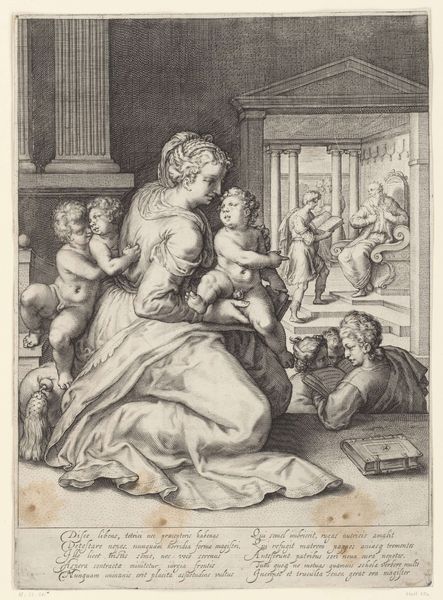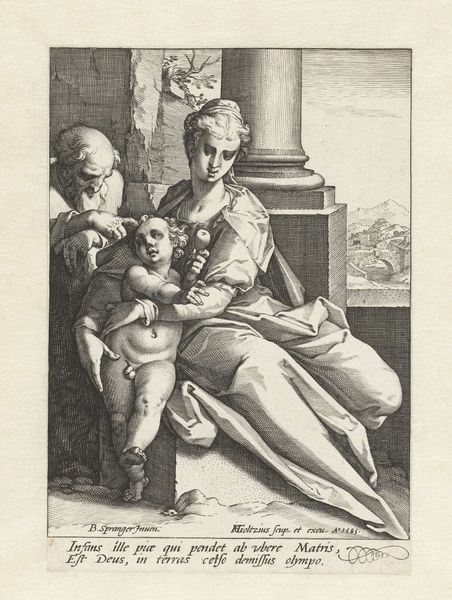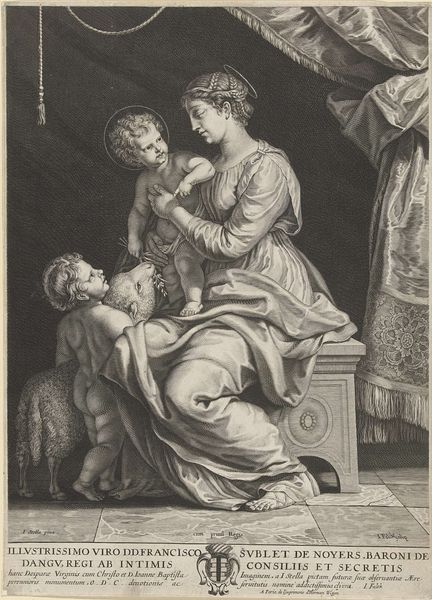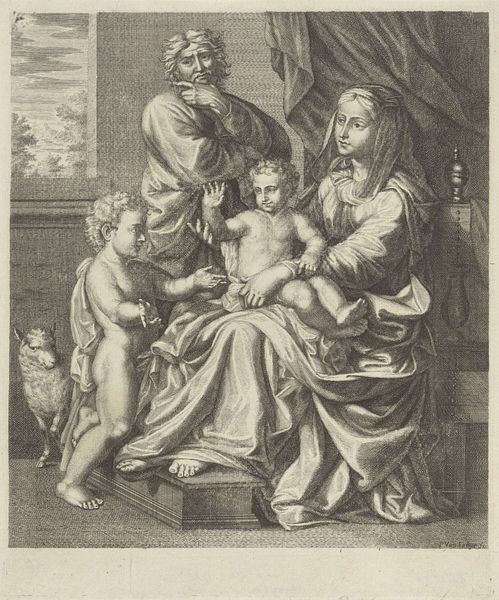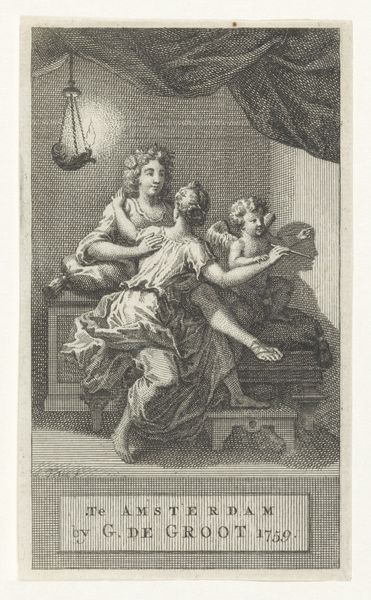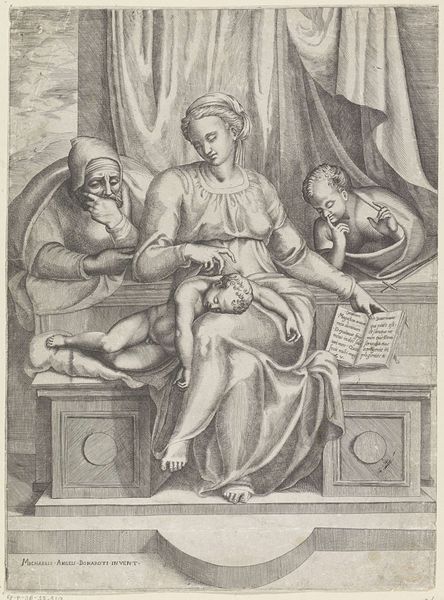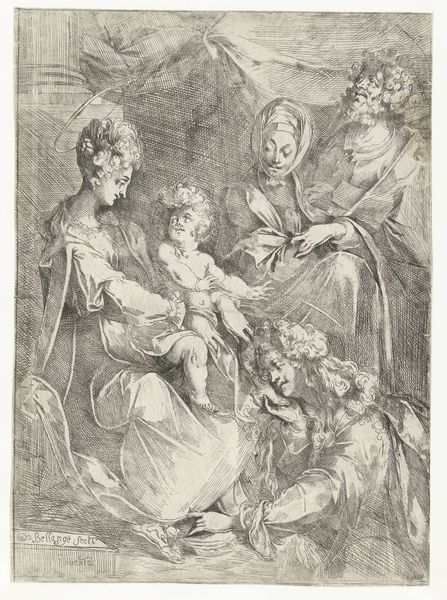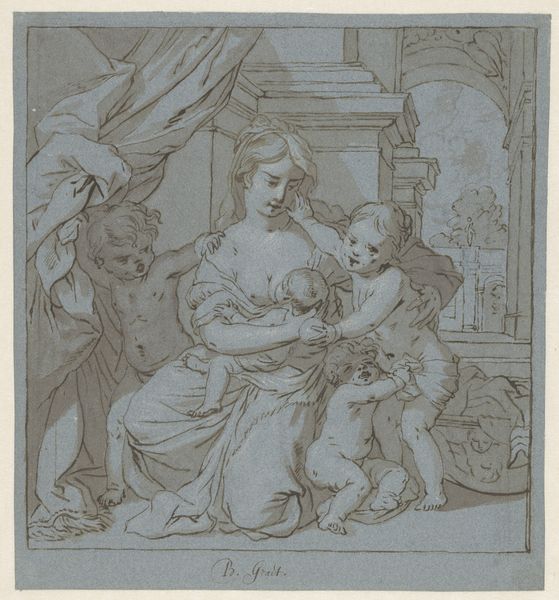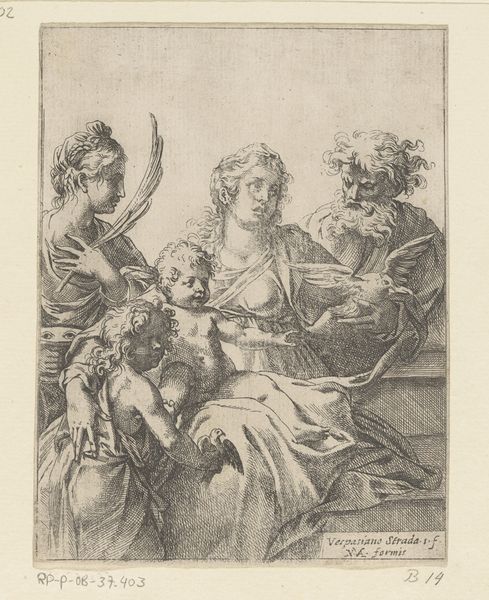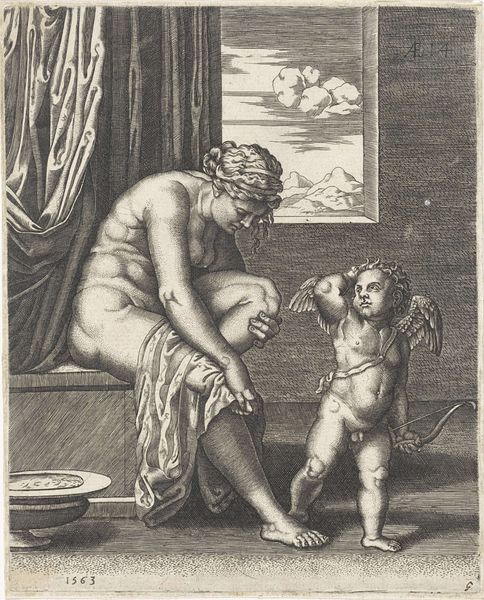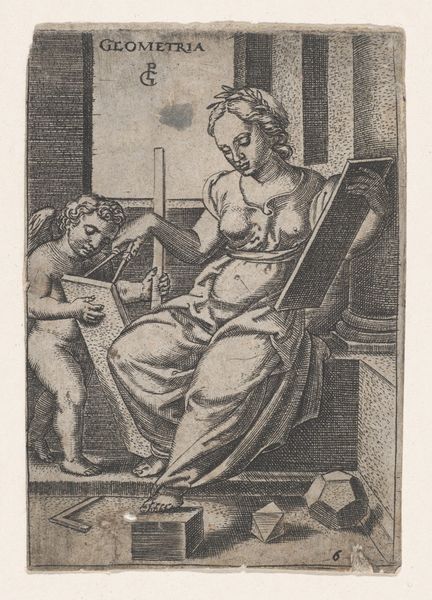
engraving
#
allegory
#
figuration
#
history-painting
#
italian-renaissance
#
engraving
Dimensions: height 215 mm, width 150 mm
Copyright: Rijks Museum: Open Domain
Curator: This is Hieronymus Cock’s engraving, “Maria met het Kind, Johannes de Doper en een engel,” created sometime between 1550 and 1570. Editor: The crispness of the lines immediately strikes me. It gives the figures a sculptural quality, as if they were carved from stone rather than simply drawn. Curator: Indeed. Cock, operating within the Italian Renaissance idiom, emphasizes idealized forms, a testament to its historical moment's specific social and religious values. The composition itself presents a dominant, maternal figure, challenging to accepted notions of power. Note how she is positioned above and larger than both children, suggesting her elevated role. Editor: The medium itself is intriguing. The meticulous process of engraving, the labor involved in transferring an image onto a metal plate—it all speaks to a deliberate and almost devotional act of production. The printmaking process itself has material implications. It's meant to be reproduced, and disseminated among many. Curator: Exactly! And to be spread means it was able to subtly disseminate ideology in a portable form to be sold and exchanged as commodities. The angel is not simply decorative; its presence signifies divine blessing upon Mary, thus perpetuating specific beliefs and shaping socio-religious roles for women and children in that era. Editor: I’m curious about that stone at her feet, too. And that column drum! The deliberate inclusion of the rock feels like it must indicate the foundation, but it is more raw as a construction material than the architectural elements around it. It disrupts the perfection just slightly. Curator: Good point. Those elements suggest the limitations of terrestrial power and mortal vision even amid the grand ideals they attempt to create. By grounding the ethereal vision in materiality, Cock comments on the tangible costs, or the ‘base material’ upon which spiritual belief must find ground. Editor: This also gives insight to the act of material selection itself. While we engage with the symbolic forms in these compositions, understanding what the work _is_, rather than simply what it represents gives it greater impact, especially when considering it in the market and devotional activities of its time. Curator: Thank you, I appreciate the reminder that historical interpretation and current perspectives are forever linked. By contextualizing artworks within a history of production and gender representation, we might better reflect and act more progressively today. Editor: And considering process lets us see the very nature of human ingenuity, what work looks like when its rendered permanent in this fashion. This gives greater perspective and context as our contemporary materials have proliferated into greater amounts than we’ve seen before.
Comments
No comments
Be the first to comment and join the conversation on the ultimate creative platform.
